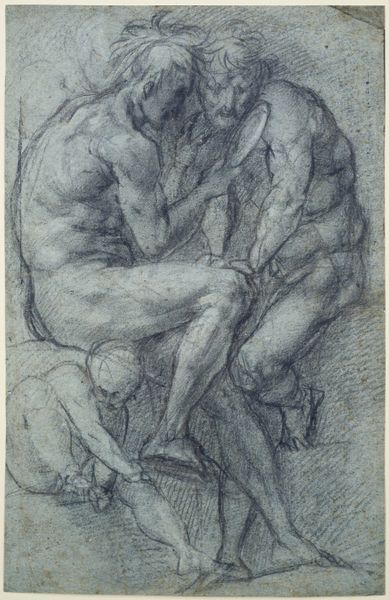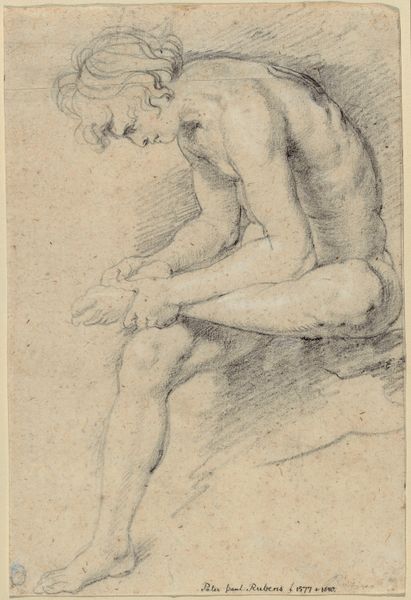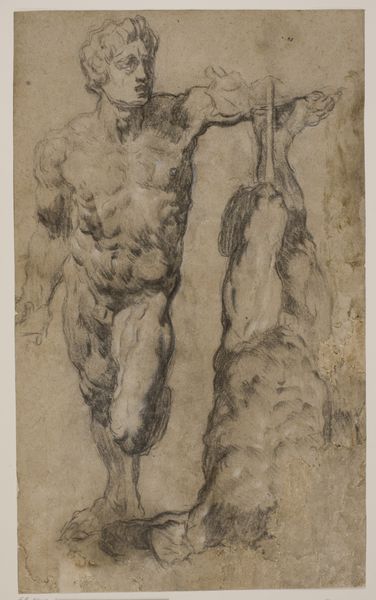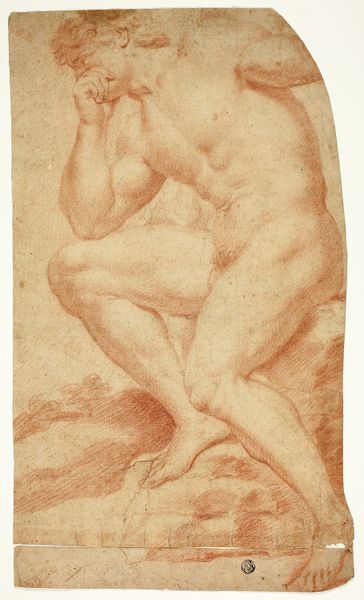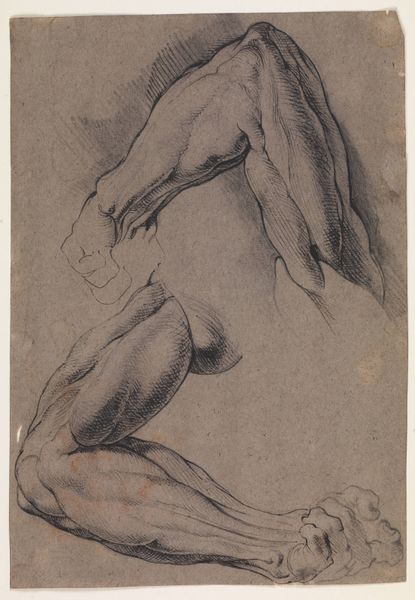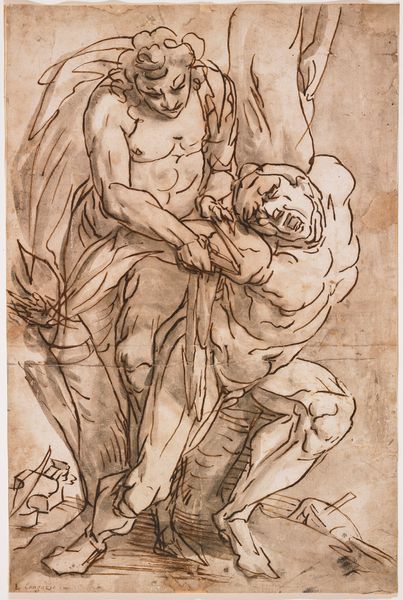
drawing, print, paper, ink, pen
#
portrait
#
pencil drawn
#
drawing
#
narrative-art
#
baroque
# print
#
charcoal drawing
#
figuration
#
paper
#
ink
#
pencil drawing
#
pen
#
history-painting
#
academic-art
Dimensions: 271 × 188 mm
Copyright: Public Domain
Curator: What strikes me immediately is the dynamism! It's like glimpsing a still from some lost gladiatorial match. Editor: This is "A Sheet of Anatomical Studies," attributed to Peter Paul Rubens, dating back to the early 17th century, between 1600 and 1610. It's currently held in the collection of The Art Institute of Chicago. Made with pen and ink on paper, Rubens explores the intricacies of human musculature, seemingly caught in a moment of struggle or extreme exertion. Curator: "Sheet of Anatomical Studies" doesn’t quite capture it for me. "Wrestling Souls" might be closer, I think. There’s something so visceral in the cross-hatching; the pen lines practically vibrate with tension, don't they? It's not just a detached study of anatomy. Editor: The dynamism you noted is interesting in relation to classical ideals. The Renaissance rediscovered anatomy, which for the Greeks signified underlying harmony between micro and macrocosmos, connecting humanity and the stars through geometric systems. This Baroque aesthetic evokes powerful emotion, inviting viewers into the scene. Curator: Baroque bombast for sure! There’s definitely emotion in the symbols—the twisted faces, the grappling hands. Rubens, man, he knew how to make muscles *speak*. The light, shadow and tone, there’s drama dripping off of it. You know, sometimes I wonder if art historians read too much into it all though. Maybe it was just Rubens, noodling away, sketching blokes. But hey, even then, look at how one captures one's attention. It's masterful work to distill form and energy into pure visual experience! Editor: It is compelling indeed; these intertwined bodies recall earlier iconic battles like the famous Laocoön group, rediscovered in the early 16th century. Struggle and death permeate our cultural memory from religious, mythic, and even psychoanalytic perspectives. Curator: Interesting… Rubens seems almost torn, exploring both objective observation and an almost theatrical interpretation. Anyway, it sure does leave a mark, no matter which way you look at it. Editor: Indeed! It invites you to contemplate its power—the timeless drama of form and its lasting impact.
Comments
No comments
Be the first to comment and join the conversation on the ultimate creative platform.



